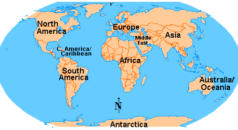
EUROPE
Balkans
The word Balkan means “mountain” in Turkish, and the Balkan Peninsula is certainly dominated by this type of landform, especially in the west.
Cappadocia
Cappadocia lies in central Anatolia, in the heartland of what is now Turkey. The rocks of Cappadocia near Göreme eroded into hundreds of spectacular pillars and minaret-like forms
Czech Republic
The castle capital of the world.
Dubrovnik
Dubrovnik is a Croatian city on the Adriatic Sea, in the region of Dalmatia. It is one of the most prominent tourist destinations in the Mediterranean Sea.
Fairy castles
Everyone knows that fairies belong in a Disney movie but castles? Europe has plenty of them.
Germany
Rothenberg, Heidelberg, Dinkelsbuhel
Greece
“Austria was Hungry, ate a bit of Turkey, Slipped on Greece and broke China”
Hungary-Budapest
Home to Erno Rubik, inventor of the Rubik’s cube,
Iceland
“Takk Fyrir Síðast” (Thank You for Last Time)
Italy
Italy ate a bit of pasta and the rest is history.
While in Italy, consider a visit to Lucca; Venice and Cinque Terre
Israel
The only thing chicken about Israel is their soup. ~ Bob Hope
Petra Jordan
Petra was originally known to the Nabataeans as Raqmu. It is a historical and archaeological city in southern Jordan, famous for its rock-cut architecture and water conduit system. Another name for Petra is the Rose City due to the colour of the stone out of which it is carved.
Lithuania
The name Lithuania was mentioned for the first time in the Annals of Quedlinburg in 1009. By the end of the 14th century, Lithuania was the largest country in Europe.
London:- Then and Now
Postcards of London with photographs of the same view, taken in the 21st Century
Montenegro
The village of Mitrovica in Montenegro is home to one of the oldest olive trees in the world. Stara Maslina is said to be over 2,000 years old!
The Netherlands and Belgium
"Netherlands" literally means "lower countries", influenced by its low land and flat geography, with only about 50% of its land exceeding one metre above sea level. In the Dutch Golden Age, spanning much of the 17th century, the Dutch Empire grew to become one of the major seafaring and economic powers. Science, military, and art (especially painting) were among the most acclaimed in the world. By 1650, the Dutch owned 16,000 merchant ships
Norway
"Is i magen" Translation: Ice in one’s stomach. Meaning: Stay in control, play it cool.
Portugal
Hoje por mim, amanhã por ti.
Poland
Many consider Poland to be a part of Eastern Europe. In fact, the country is in the very center of Europe.
Russia
Moscow, St Petersburg, The Countryside
At the end of the 17th century, Peter the Great instituted a tax on facial hair in an attempt to modernize Russian society. Anyone with facial hair was required to carry a copper or bronze token to prove that they had paid the tax.
Serbia - Belgrade
The only Serbian word that is accepted and used across the world is “vampire”.
Spain
There are an estimated 440 million native Spanish speakers around the world, second only to Mandarin.
Switzerland
Switzerland is one of the two countries in the world to have a square flag. The other is Vatican City.
Turkey
Istanbul straddles both Europe and Asia with the Bosporous Strait separating the two. Asian Turkey is included in Europe here, just for convenience, and is not intended to be political.
United Kingdom
England, Scotland, Ireland and Wales
Proudly powered by Weebly




